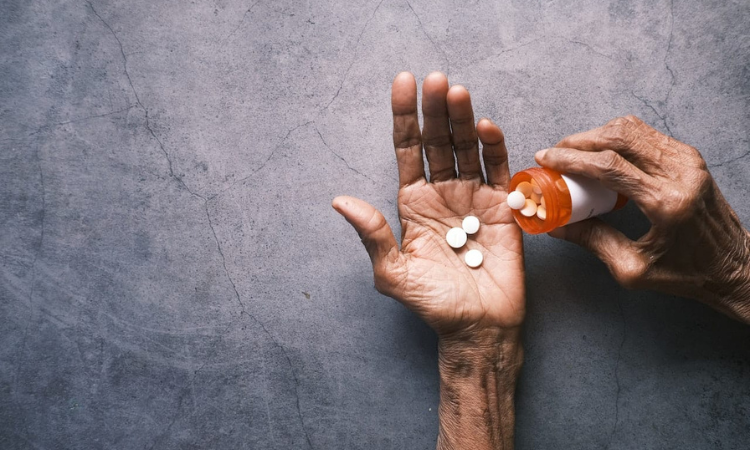Last year, Emily, a young nurse, faced an ordeal that would change her life. While on duty, she witnessed a devastating accident, an image that haunted her long after her shift ended. Each night, she lay awake, reliving the horrific scene, feeling the weight of helplessness and shock. Her days became a blur, clouded by anxiety and fear, until she realized she couldn’t carry this burden alone. Emily’s journey to healing began with a crucial decision – to confront her trauma head-on. This decision marked the first step in her path to preventing PTSD, a path filled with support, resilience, and newfound strength.
Like Emily, many of us encounter situations that shake our world, leaving imprints on our minds and hearts. In this blog, we explore how to navigate these challenges, breaking the cycle of trauma before it manifests into PTSD. We’ll delve into proactive strategies, understanding that while each person’s journey is unique, the power of early intervention, supportive networks, and self-awareness can be universal tools in restoring mental well-being.
A Comprehensive Guide to PTSD Prevention
Post-Traumatic Stress Disorder (PTSD) can cast a long shadow on individuals who have experienced traumatic events. However, proactive measures can play a pivotal role in preventing its onset and reducing its impact. This comprehensive guide delves into key strategies to foster resilience and mitigate the effects of trauma, emphasizing the importance of how to prevent PTSD.
Early Intervention: Addressing Trauma Head-On
- Effective intervention is the cornerstone of preventing PTSD. Encourages individuals to confront and process traumatic events promptly.
- Professional guidance significantly reduces the risk of long-term psychological consequences.
- Sets the stage for a healthier recovery by facilitating early recognition and intervention.
Building a Supportive Network: The Power of Connection
- A robust support network acts as a shield against the lingering effects of trauma.
- Encourages individuals to connect with friends, family, or support groups.
- Provides a crucial outlet for emotional expression, aiding in the prevention of PTSD.
- Fosters a sense of belonging and understanding, enhancing overall well-being.
Mindfulness and Relaxation Techniques: Tools for Emotional Resilience
- Equips individuals with mindfulness and relaxation techniques.
- Empowers them to navigate stress and anxiety effectively.
- Includes practices like deep breathing exercises and meditation.
- Serves as a proactive defense against the emotional toll of trauma.
- Contributes to the development of a more resilient mindset.
Education and Awareness: Empowering Through Knowledge
- Understanding signs and symptoms of PTSD is paramount.
- Empowers individuals to recognize potential issues early on.
- Education and awareness campaigns in communities and workplaces are crucial.
- Creates an environment conducive to timely intervention.
- Breaks down the stigma surrounding mental health issues.
While it’s not always possible to prevent PTSD entirely, taking proactive steps, by understanding how to prevent PTSD through early intervention, and building a supportive network, can significantly reduce the risk and promote overall mental well-being. By fostering resilience, encouraging early intervention, and creating supportive environments, we can work towards minimizing the impact of trauma on individuals’ lives. It’s essential to remember that seeking professional help is a vital component of PTSD prevention and treatment.
Understanding the Long-Term Outlook for PTSD
The long-term outlook for PTSD varies significantly from person to person and is influenced by various factors, including the severity of the trauma, the availability of support systems, the timeliness of intervention, understanding how to prevent PTSD is a crucial aspect and is influenced by several other key factors:
- Individual Variability:
The long-term outlook for PTSD is not a one-size-fits-all scenario. Each individual’s experience is unique and influenced by factors such as the severity of the trauma, personal resilience, and the presence of support systems.
- Factors Influencing Outlook:
The severity of the traumatic event plays a significant role in shaping the long-term prognosis. Additionally, the availability and strength of support systems, both personal and professional, contribute to the overall outlook. Timely intervention and access to appropriate treatment further influence the trajectory of PTSD recovery.
- Dispelling Misconceptions:
A common misconception is that PTSD can be swiftly cured, similar to a short-term illness. In reality, many individuals grapple with PTSD for extended periods before finding effective treatments or coping mechanisms. Understanding the chronic nature of PTSD is crucial for managing expectations.
- Realistic View of Recovery:
Unlike acute conditions, PTSD is akin to a chronic medical condition, impacting both the mind and body. Acknowledging this reality is fundamental to adopting a realistic view of recovery. It’s a process that demands time, patience, and a commitment to long-term well-being.
- Protracted Healing Process:
Recognizing that healing from the profound effects of trauma is a protracted process is essential. Unlike immediate recoveries, significant improvement often takes months or even years. This understanding underscores the importance of commitment and perseverance.
- Monitoring Progress:
While the improvement may be gradual, it’s crucial to monitor one’s mental health and well-being. Regular self-assessment and seeking professional help when needed are integral to ensuring that symptoms do not worsen and that progress is being made over time.
- No Concrete Timelines:
The healing process from PTSD is unpredictable, and there are no concrete timelines for when symptoms will completely dissipate. Embracing the uncertainty and recognizing the individuality of the recovery journey can help individuals manage their expectations.
Understanding the long-term outlook for PTSD involves acknowledging the intricacies of recovery. Be patient with yourself and know that there are options available if things don’t go as quickly as you’d like them too!
Can PTSD Go Away? Understanding the Trajectory of Recovery
One common question that arises when discussing PTSD is, “Can PTSD go away?” The answer is complex and varies from person to person. PTSD rarely resolves on its own without some form of intervention. While some individuals may experience a natural reduction in symptoms over time, complete resolution without targeted treatment is uncommon.
The trajectory of recovery depends on several factors, including the nature and severity of the traumatic event, the individual’s resilience, and the availability of a robust support system. Early intervention significantly influences the long-term outlook for PTSD recovery.
Here’s what you need to know:
- Professional Help: Seeking therapy is crucial. Evidence-based treatments such as Cognitive-Behavioral Therapy (CBT) and Eye Movement Desensitization and Reprocessing (EMDR) are effective in managing PTSD symptoms.
- Medication: In some cases, medication, such as antidepressants, can be prescribed to alleviate symptoms associated with PTSD.
Understanding PTSD Treatment Guidelines:
Adhering to established treatment guidelines enhances the effectiveness of interventions. Treatment guidelines often include:
- Therapy Options: CBT, Exposure Therapy, and EMDR are commonly recommended therapeutic approaches.
- Medication: Depending on individual needs, antidepressants or anti-anxiety medications may be prescribed.
Understanding treatment guidelines and actively participating in the recovery process are key steps towards managing and overcoming PTSD. By fostering awareness and support, we can collectively work towards creating a more compassionate and informed approach to mental health.
Facts About PTSD: Understanding the Impact and Prevalence
- Prevalence of PTSD:
- According to the National Institute of Mental Health (NIMH), approximately 7-8% of the U.S. population will experience PTSD at some point in their lives.
- Veterans are particularly susceptible, with an estimated 11-20% experiencing PTSD in a given year.
- Traumatic Events and PTSD:
- Anyone can develop PTSD after exposure to a traumatic event. This includes incidents such as combat exposure, sexual violence, accidents, or natural disasters.
- About 60% of men and 50% of women experience at least one traumatic event in their lives, but not everyone develops PTSD.
- Onset of Symptoms:
- PTSD symptoms may begin immediately after the traumatic event, but they can also manifest weeks, months, or even years later.
- Delayed onset is common, emphasizing the importance of ongoing mental health support for those who have experienced trauma.
- Impact on Daily Life:
- PTSD can significantly interfere with daily functioning, affecting relationships, work, and overall quality of life.
- Individuals with PTSD may struggle with emotional regulation, experience flashbacks or nightmares, and avoid situations reminiscent of the traumatic event.
- Comorbidity with Other Conditions:
- PTSD often coexists with other mental health conditions. Approximately 80% of individuals with PTSD have at least one comorbid psychiatric disorder.
- Common comorbidities include depression, anxiety disorders, and substance use disorders.
- Risk Factors:
- Certain factors increase the risk of developing PTSD, such as a history of trauma, lack of a strong support system, and pre-existing mental health conditions.
- Women are more likely than men to develop PTSD, and genetic factors may also contribute to vulnerability.
- Treatment Effectiveness:
- Effective treatments for PTSD include psychotherapy, medication, or a combination of both.
- Approximately 50% of those treated for PTSD show significant improvement, emphasizing the importance of accessible and tailored mental health interventions.
- Global Impact:
- PTSD is a global issue, affecting individuals regardless of cultural or geographical differences.
- In conflict zones and areas with high rates of violence, the prevalence of PTSD may be particularly elevated.
- Stigma and Barriers to Treatment:
- Stigma surrounding mental health issues can be a significant barrier to seeking treatment for PTSD.
- Educating communities about mental health and reducing stigma is crucial for encouraging individuals to access the support they need.
- Invisible Wounds:
- PTSD is often referred to as the “invisible wound” because symptoms are not always immediately apparent.
- Understanding and recognizing the signs of PTSD is essential for fostering a more supportive and empathetic society.
Conclusion: Empowering Change in PTSD Awareness and Advocacy
In conclusion, the journey to understanding and preventing PTSD is a collective effort that requires compassion, awareness, and proactive engagement from all of us. While it’s crucial to recognize the individual experiences of those dealing with PTSD, it is equally important to foster a community that supports healing and resilience.
We have the power to make a difference in the lives of those affected by PTSD. Whether it’s by educating ourselves and others, advocating for mental health resources, or simply lending an ear to someone in need, every action counts. Let’s take the initiative to break down the barriers of stigma and create a supportive environment where healing is not just a possibility, but a reality.
Take Action Today:
- Start by sharing this blog post with your network to spread PTSD awareness.
- Join or organize an event in your community to educate and discuss mental health.
- Volunteer with organizations that support PTSD research and recovery.
- Reach out to someone you know who might be struggling and offer your support.
Together, we can build a world where understanding PTSD and mental health is not an exception, but a norm. A world where everyone feels safe to share their stories and seek help without fear of judgment. The path to change begins with us, and it starts now.
Are you ready to be a part of this transformative movement? Share how you plan to contribute to PTSD awareness and support in your community in the comments below. Let’s unite in this vital mission and make a lasting impact and contact us for PTSD Awareness.









